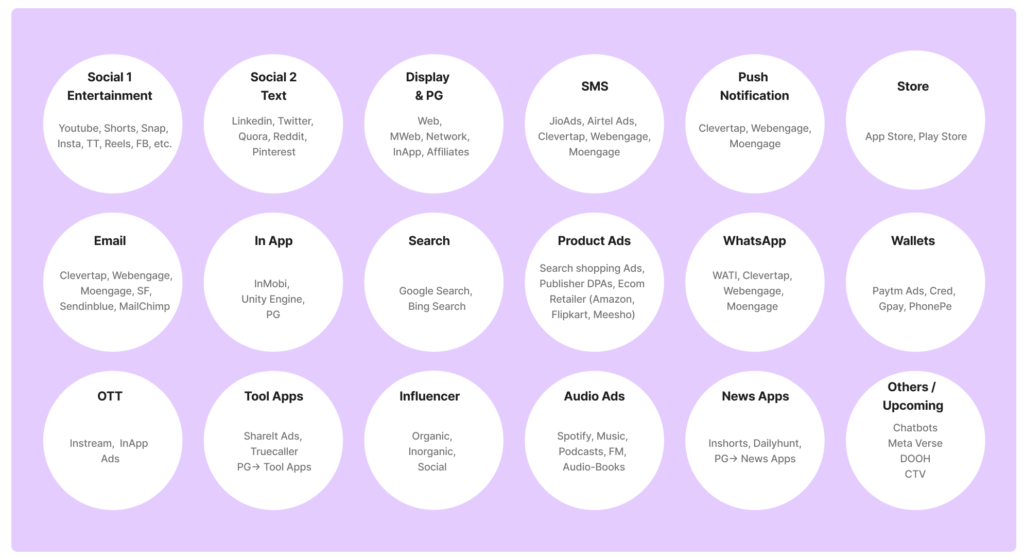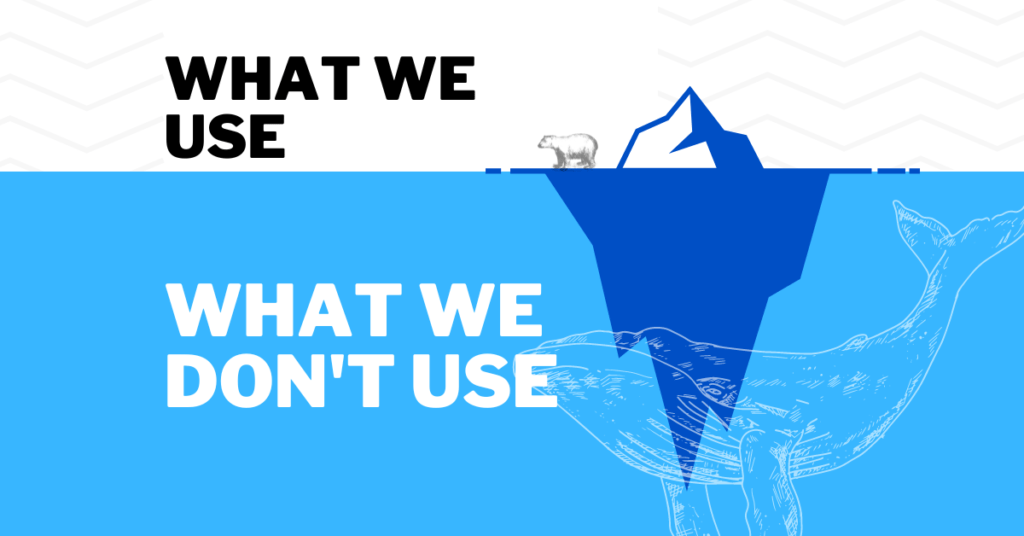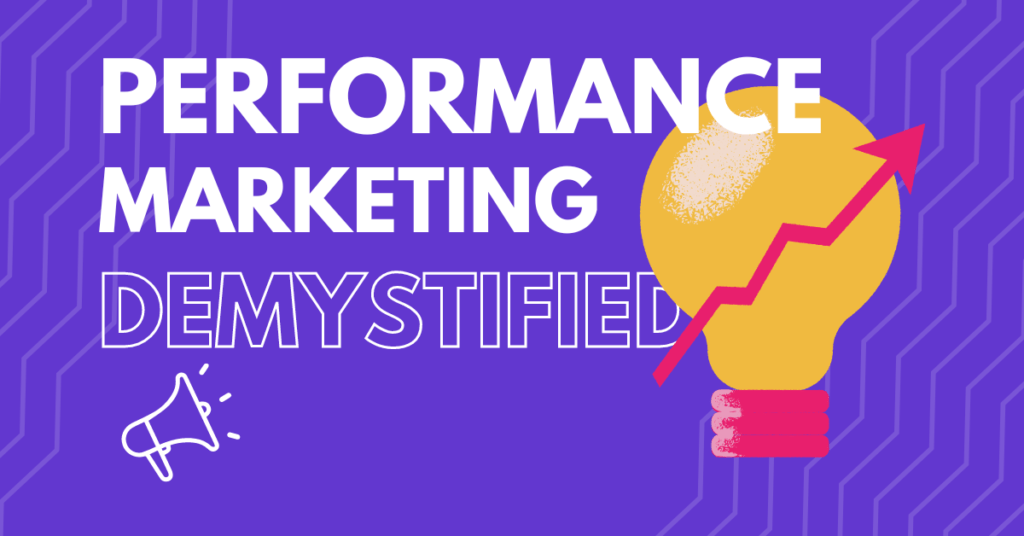The digital advertising industry has seen immense growth in recent years. With the rise of technology and the 5G internet, businesses have found new ways to promote their products and services. In this blog post, we will take a closer look at the global and Indian digital advertising industry, explore the market size of digital advertising for web and mobile, the various channels of digital marketing, and what brands should do when there are so many channels for digital marketing.
Table of Content
- The market size of Web and Mobile advertising
- Where can an Advertiser market their products or services
- What should brands do when there are so many avenues for digital marketing?
The market size of Desktop and Mobile advertising
According to a report by Statista.com, global digital ad spending reached a whopping $615 billion (approx. ₹50.4 Lakh Crore) in 2022 and is expected to hit $900 billion by 2027! The driving force behind this growth is the increasing number of internet users, fast internet accessibility, reduced mobile device costs, and the growing popularity of social media platforms.
But here’s the thing – these numbers only account for search, video, and banner ads and don’t include marketing spend on email, SMS, audio, influencers, sponsorships, and more. So, the actual spending may be way higher than reported!
As per the report, in 2022, search, video, and banner ads made up over 95% of total ad spending, with search ads contributing $260 billion, video ads $180 billion, and banner ads $155 billion. Desktops made up 39% of total global ad spends, while mobile advertising made up a staggering 61% – a number that’s expected to rise to 69% by 2027.
India’s digital advertising industry is also growing at a rapid pace. According to a recent Redseer report, digital ad spending in India for 2022 was approximately $8 billion, projected to reach $21 billion by 2027!
So, what’s driving this digital ad spending growth? There are many reasons; my top three reasons are:
Firstly, advertisers prefer digital advertising as it allows businesses to target their audience more precisely, resulting in a higher return on investment for their marketing budgets.
Secondly, advancements in ad tech, access to fast internet, and affordable mobile devices have brought new users to the digital ecosystem, thereby improving reach and inventories for advertising.
Finally, developments in AI systems have facilitated the growth of new channels for marketing that we have never seen before, such as Connected TV and Digital Out Of Home (DOOH), to name a few.
Now that we’ve got a better understanding of the market size and drivers behind digital advertising growth, let us look at the various channels a brand can use to advertise its offerings.
Useful links:
Statista.com: https://www.statista.com/outlook/dmo/digital-advertising/worldwide
Redseer.com: https://redseer.com/reports/digital-advertising-in-india-and-disruptive-trends
Where can a brand advertise its products or services?
If you’re a brand looking to market your products or services, you’ll be pleased to know that countless options are available. While traditional media like TV, radio, newspapers, and billboards are still prevalent, we’ll only focus on digital channels, which is in the scope of Breadjam Social.
Social media platforms such as Facebook, Reels, Twitter and Instagram are popular choices due to their large user base and high engagement rates. Display advertising, which includes banner ads and pop-ups, is another effective way to promote products and services online. Search engine marketing (SEM) and search engine optimization (SEO) are also important channels for driving traffic to a website.
Apart from these channels, there are numerous other options that you can explore. These include email marketing, affiliate marketing, influencer marketing, and video advertising, to name a few.
Here are all the channels a brand can use for digital marketing.

This seems like a lot to take in, but don’t worry! While digital marketing may seem like a daunting task at first, once you find the right fit, it’s similar to a well-oiled machine with multiple moving parts all working in sync.
Once you understand the strengths and weaknesses of each channel, you can choose the ones that align with your business goals and target audience. So, go ahead and take your pick – the world of digital marketing is waiting for you!
What should brands do when there are so many avenues for digital marketing?
With so many digital marketing channels available, it can be overwhelming for brands and advertisers to determine the most effective strategy. While there is no exact science as to what will work and what won’t, we can surely create a framework to execute our marketing strategy as marketers. I personally follow a process:
- Analyze your historical data (internal data, not 3rd party market research data) from the past 2-3 years to understand:
- Demographics, location, income brackets, average ticket sizes, interests, behaviours, lifetime value, frequency of the users and create customer personas for marketing
- Which are the 20% products that are contributing 80% towards my business goals, and why? (why are people buying it? What is working? Can it be replicated?)
- Which channels have historically given me the best ROI for my marketing campaigns
- Next, return to the drawing board and dive deeper into understanding the brand’s user journey and the marketing funnel. The first will throw light on how a user/customer behaves when they are offered your product. The second will help define your marketing goals: awareness, conversion, retention, and reactivation.
- Once you have a clear understanding of your data, divide your marketing budget into three buckets: regular, innovation, and experimental.
- The regular budget should be allocated to tried and tested channels that have given good ROIs and contribute to your top-line revenues. Caution: Only break what is already working if you need to reinvent it.
- The innovation budget should be used for custom media solutions or sponsorships with influencers, sports stars, or movie stars. In short, this budget is for creative marketing strategies aimed at brand-building and recall.
- The experimental budget is for trying out new channels or tools that could eventually become a part of your regular budget.
Once the above details are in place, you can move to channel selection and media planning. Remember, choosing the channels that align with your business goals and target audience is the most important.
Conclusion
In today’s digital age, brands and advertisers have many options for marketing their products and services. With the increasing number of internet users and the surge in new modes of marketing, global digital ad spending has witnessed significant growth over the years.
While it can be overwhelming to determine the most effective strategy with so many digital marketing channels available, marketers can create a framework to execute their marketing strategy by understanding their target audience, historical data, and marketing funnel. In addition, it is important to understand the strengths and weaknesses of each channel and choose the ones that align with the business goals and target audience.
By following these steps, brands and advertisers can effectively navigate the digital marketing landscape and achieve their objectives.




